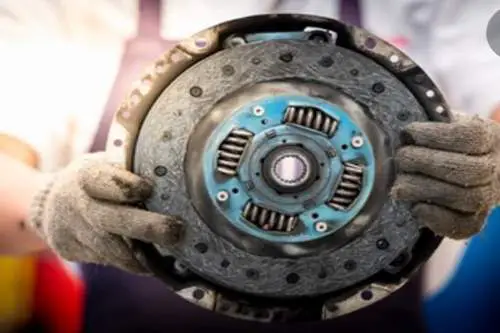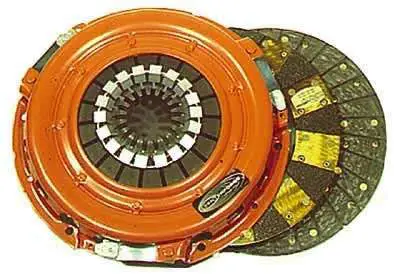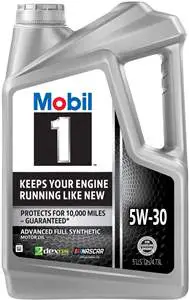
Many of us take clutch for granted before we’re left stranded. With every start, stop, and gear change, clutch pressure plates work hard, thus they are likely to wear out with time.
Clutch pressure plate failures are easy to spot if you pay significant attention to your car. In essence, a driver may face problems regarding noise, vibration, and difficulty in changing gears.
To assess better, you’ll need to be vigilant of clutch pedal behavior, overheating, and problems in starting the car. But first, let’s understand the basics.
What is a Clutch Pressure Plate and How Does it Work?
The main function of the pressure plate is to apply clamping force against the clutch plate. This pressure squeezes the clutch disk against the flywheel, thus allowing power to flow from engine to transmission.
Another task of the pressure plate is to work by interrupting the power flow. This facilitates the driver in the easy start, stop, and shifting of gears.
What are Clutch Pressure Plate Failure Symptoms?
Normally, a clutch pressure plate goes a long way. Nevertheless, the chances of them wearing off are inevitable.
Thus, some of the common clutch pressure plate failure symptoms are given below:
- Difficulty in Shifting Gears
- Squeaky Pedal
- Sliping of Disc
- Problems in Gear Engaging
- The Fingers on the Pressure Plate are worn
- Noise
- Vibration in Transmission
- Slipping at Higher RPMs
- Loose Clutch Pedal
- Overheating
- Car Won’t Star
Difficulty in Shifting Gears
Difficulty in shifting gears is the most primary indicator of the pp (pressure plate) issue. Initially, the problem might be among later gears (shifting from 3rd to 4th).
However, with prolonged ignorance, the condition starts deteriorating and the car would no longer declutch fully.
Squeaky Pedal
If you can hear a squeaky high-pitched sound on pressing the pedal, then know that you have a problem with your clutch pressure plate. It is also possible that the clutch disc is worn out.
Sliping of Disc
When you depress a bad pressure plate, it will not exert full pressure on the disc. Due to the lack of pressure, the disc will slip and wear. Resultantly, no power is delivered to the wheels.
The Worn Pressure Plate Fingers
Worn-out fingers on the pressure plate are among the most visible symptoms of clutch plate problems. It may happen due to slipping or overheating of the diaphragm.
Noise
Fully depressing or even releasing the clutch makes a dragging noise, indicating problems with the pressure plate. However, at times the noise can be due to the master cylinder.
If pressing the pedal is providing the desired effect on clutch operation, then the master cylinder is all good and the noise is due to a poor pressure plate.
Transmission Vibration
Poor alignment of the clutch plate results in transmission vibration. When you drive at a higher speed with such improper placement, the clutch plate fails to bridge the connection between transmission and engine.
This ultimately led to transmission complications and vibration.
Slipping at Higher RPMs
Slipping of the clutch plate at higher rpm is due to reduced friction. Other possible reasons may include incorrectly placed flywheel or wrong installation of the clutch.
Read More About Clutch Slipping Symptoms: What are Slipping Clutch Symptoms?
Loose Clutch Pedal
If your clutch pedal starts feeling loose, then the most identified failure is with the pressure plate diaphragm spring.
If you have a hydraulic clutch release system, the chances are fairly higher that the hydraulic system is not placed properly.
Overheating
One of the clutch plate failure symptoms is vibration in transmission. Even if the clutch plates bridge the connection between transmission and engine, the slipping becomes inevitable.
It is mainly due to faulty pressure plates as they would start overheating thus, resulting in clutch plate slipping and transmission vibration.
Problems in Gear Engaging
One of the most prominent symptoms of pressure plate failure is the difficulty in engaging gear. On shifting the gear under such circumstances, the pp will produce loud screeching noises.
Car won’t Start
Pressure plate failure also results in difficulty starting the car. If you are facing any of such difficulty, it is important to get pp checked as it may also shred the bell housing up before exploding.
How to Diagnose Clutch Pressure Plate Failure?
When the clutch starts to wear out you will feel it slipping on accelerating.
Your car will produce a racing sound, but the corresponding acceleration would not be much. In such circumstances, you should get your pressure plate checked before it gets stranded.
Grinding of the gears is another diagnostic characteristic of pressure plate failure. A little grinding is normal in some cars (mostly in older cars).
However, when shifting gears if you feel more than usual vibration and grinding, that is an important indicator of clutch pressure plate failure.
When to Replace Pressure Plate?
The pressure plate usually doesn’t wear out completely, yet under three conditions the replacement becomes necessary when!
- Grooves become deeper that will tear up the new disk
- Springs are weak or broken
- The operator needs a heavier unit
If the factory clutch is not causing much vibration, then you can have the pressure plate resurface and start reusing it smoothly.
For the best results, clutch components need to be replaced together. It would include pilot bearing, throw-out bearing, clutch disc, and pressure plate, etc.
Above all, check the flywheel and clutch cover as well. If found defective, replace them for efficient functioning.
Centerforce Pressure Plate and Disc
With just the right amount of durability and performance, this clutch works best for both on-road and off-road driving.
It comes with both an alignment tool and a detailing tool to make sure it fits well. From smooth shifting to enormous gripping power, this clutch is renowned as a powerful replacement. See the latest price here.
What Happens When Clutch Plate is Damaged?
If your clutch place is damaged and it goes unnoticed, it will cause more wear and tear, as the engine is running more than it actually should!
Other than basic flywheel damage, the clutch would slip, thus the engine would rev higher than necessary resulting in poor fuel economy.
The higher rev also results in more wear and tear such that the clutch could burn anytime. However, a summarized list of clutch plate damages is as follows:
- Difficulty in shifting gear
- Loss of power
- Poor fuel efficiency
- Damage to the top gear in the gearbox
- High rev reduced engine life
- Flywheel damage
- Poor clutch release bearing
Despite the warning signs, if you keep on using the clutch, it would result in a complete seizure of operation at any time. You would not be able to control or shift the gears, thus endangering your life.
What Causes Worn Pressure Plate Fingers?
The wear is mostly due to the release bearing’s clip, which is installed incorrectly. The improper placement is such that it keeps hitting fingers all the time.
Worn-out pressure plate fingers become bad therefore you need to replace them. However, it’s important to replace the bearing as well, thus avoiding it happening again.
How do You Know Pressure Plate Fingers are Problematic? A heavy clutch is the most evident clue of problematic fingers. It happens when the release bearing stops performing well as it presses against plate fingers.
What are Clutch Problems and Solutions?
Now that you have substantial information about causes, significant solutions are listed below:
Fixing Spongy Clutch Pedal
The spongy clutch pedal is one of the common problems, the solution is that check the fluid level first. If the fluid level is low, check any signs of leakage. If your slave cylinder is leaking, replace it.
If not, fill up the brake fluid level. Next up, one person should pump the pedal to the floor while the other should open up the bleeder. At first, you might feel there’s no air, no fluid.
However, you must pump several times before opening the bleeder, and eventually, you would be able to fire off the car.
Fixing Slipping Clutch
Clutch slipping indicates insufficient friction with the flywheel to transfer power to the engine. It means that the clutch requires replacement.
The only way to fix the issue is to replace the problematic parts. To do so, lift the car via a jack. Remove drive shaft, slave cylinder, bolts, and anything in the way to transmission.
Take the clutch assembly out. Replace it with a new clutch assembly and put everything back together and you are good to go!
Fixing Hard Gear Shift
The stiff clutch is mainly due to a lack of grease. If the clutch is not getting enough oil due to its location, fix it by bathing it in oil.
Remove the clutch and dip it in oil overnight for a quick fix!
Mobil Motor Oil
This full synthetic motor oil assists in protecting critical parts of the engine. It does not result in damaging deposits resulting in improving the life of the engine.
Even after significant miles, the viscosity maintains its good state and works well for all vehicles. See the latest price here.
How to Test a Clutch Pressure Plate?
There are two ways to do so, keep reading ahead to know about them!
- Without Disassembly Method
To test if the clutch pressure plate is doing fine, begin by starting the engine. Now, pull the hand breaks tightly and engage 3rd gear.
Slowly, release your clutch. If the engine begins to die off, then the clutch plate is in good condition. However, if the engine keeps running and display signs of slipping, then it’s time for a replacement.
- By Taking Out Pressure Plate
Take out your pressure plate and put it on a hydraulic press. A twelve or six-ton hydraulic press would work just fine.
Make sure to keep the bolt section of the flywheel should be at the surface. Now get some object that can mimic the role of throw-out bearing. Now align it all with the hydraulic press.
Now lower the hydraulic press and measure the distance from actual pp to a spot on pressure. Now you have to see the manufacturer to know how far to press pp fingers down.
Gently press it down to the spec number. If the pp doesn’t rise up, then either fingers are weak or there is some other problem with the pressure plate.
What Causes Sudden Clutch Failure?
It might happen due to multiple reasons which are as follows:
- Leakage from master or slave cylinders
- Jammed or wrong placement of a center plate
- Broken clutch
- Shear off friction plate
- Hydraulic system failure
- Misuse of clutch causing overheating
- Defect in the clutch cable
- Damaged shift linkage
- Jammed clutch plate
- Damaged release bearing
What Causes Clutch Pressure Plate to Break?
Most often, extreme engine braking is the cause behind it. The resulting reverse loading compresses the straps, either causing them to buckle or simply break the pp at the point of the rivet.
Overheating can be another possible factor. Due to extreme heat changes, the pressure plate gets broken down. It might happen due to slipping clutch or use of force as well.
While assembling clutch hardware, if the release bearing is not placed properly, it can also result in damage to the pressure plate. Moreover, if the transmission isn’t lined up properly, the twisting motion can also break pp.


